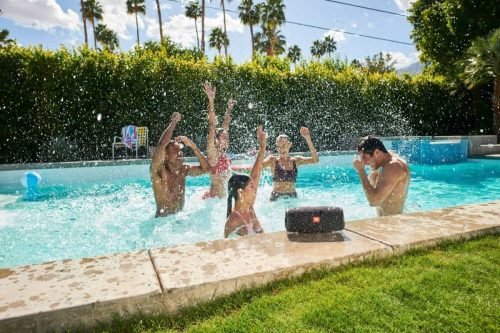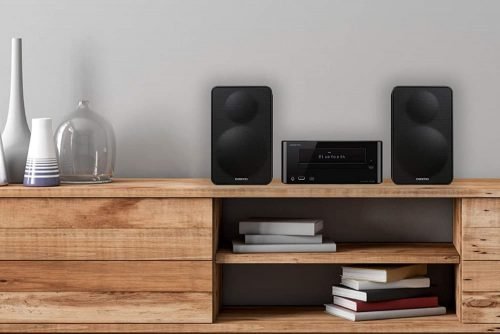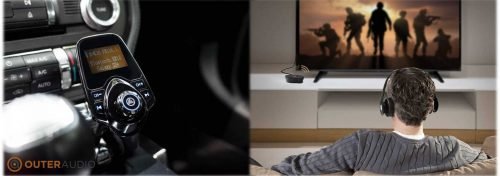We all love the honeymoon phase of owning a product. No scratches, no scuffs, exciting new sound, and a battery that feels undefeatable. With time, however, our speakers pick up nicks and scratches, we become desensitized to the exciting new sound signature, and we start seeing our average battery life start to drop quicker than we remember.
While we’ve seen battery technology improve dramatically over the years, it’s still a technology that we need to be conscious of if we want to make it last over an extended period. This is especially true because we will often see general advice around battery maintenance, but often it’s broad advice that people follow when using a different battery type, in turn doing more harm to their battery than they would have if they had continued traditional usage methods.
Because there isn’t a defined industry standard for the type of battery being used, this also means that the best practices required to ensure a longer battery life varies between speakers. In this article, we’ll take a closer look at the different types of batteries used by Bluetooth speakers and the best practices to ensure that you can ensure a long, healthy lifespan on your batteries.

Looking At The Battery Types

Lithium-ion (Li-ion)
Best Practices
- Keep your speaker in a cool location when storing it.
- The best battery levels for storage with Li-ion are around 30-40%.
- If your device becomes excessively hot, consider powering it down and letting the battery cool.
- Charge the battery once it reaches lower levels of around 15-20% without fully depleting it first.
- Avoid regularly overcharging your speaker (especially if your speaker manufacturer hasn’t included a BMS); while charging to 100% will not have a big impact in most cases, leaving the battery connected to the charger for long periods can cause heating issues and subsequent degradation.
Benefits
Drawbacks
Popular speakers using Lithium-ion batteries: Sony SRS-XP700, JBL PartyBox 710, JBL Charge 5, Bose SoundLink Revolve, Marshall Emberton, Treblab HD77, Anker Motion Boom Plus, and many more…
Lithium-ion (Li-ion) is one of the most popular types of batteries, particularly for consumer electronics. Li-ion batteries are actually the standard in most modern smartphones. This battery technology uses a reversible reduction method on lithium ions to store energy.
If your speaker uses a Lithium-ion battery, you will want to try and keep the battery cool while in storage. While traditional room temperatures don’t typically cause any loss of long-term battery life, we recommend keeping them out of the sun where possible, at least for extended periods. Occasionally getting exposed to temperatures over 85’F will not cause any harm, but when stored over these temperatures for an extended period, it can harm your battery.
Lithium batteries are most efficiently used when they are kept between battery levels of 20-85%. You may have noticed that some modern smartphones can set a charge limit on the amount the battery can charge. When enabled, it will often set the cap at around 85%. This ensures that your phone’s Li-ion battery is not regularly overcharged. This can often be an issue when leaving your phone or Bluetooth speaker, in this case, attached to the charger overnight.
A similar, inverse approach is valid for letting the battery deplete. When using a Li-ion Bluetooth speaker, you should also try to prevent using the speaker until the battery fully depletes. You should stop usage and charge when the battery level reaches around 20%. Letting it deplete a few times is not going to destroy the battery, but consistently letting it fully drain before charging will impact your battery performance over the long term.
You should implement similar charging techniques, where possible, on your Bluetooth speaker to ensure longer battery life. If you only charge your Bluetooth speaker once every month or even every few weeks, it’s not as much of a concern. We still recommend trying to adopt best practices, but less-than-ideal charging methods typically become more noticeable when scaled with the use of the device. Battery life is typically defined more by cycles than time itself, so if you’re regularly cycling your speaker’s battery, this is where you’d want to be more thorough with your best practices.
We understand that it may feel counter-intuitive, but you don’t want to keep your Lithium battery fully charged. When looking at longer-term storage for Lithium-ion batteries, for the course of several months, for instance, you also want to try and store the battery at between 40-50%.
As is clearly evident, lithium batteries do not suffer from what is referred to as battery memory. Battery memory is a concept that would be familiar to those who remember older cellphone batteries, where we were told that we should let the batteries fully discharge and then make sure to recharge to 100%. This was an artifact of the nickel batteries used in phones at the time. While nickel batteries are still around, they have become far less common.

Lithium Polymer (Li-po)
Best Practices
- When storing the speaker, store the battery at around 40% charge.
- Try to charge the battery to around 80-85% instead of 100% for the best long-term performance from the battery.
- Where possible, avoid draining your battery completely before recharging. Aim for around 15-20%.
Benefits
Drawbacks
Popular speakers using Lithium Polymer batteries: JBL PartyBox 110, JBL Flip 6, JBL Clip 4, JBL Go 3, Bose SoundLink Color II, etc.
Lithium Polymer (Li-po) is very similar to the Lithium-Ion batteries that we discussed above but also has some distinct differences. Li-po batteries are a newer and more expensive technology; we’ve started to start seeing more consumer products in both the smartphone and Bluetooth speaker market start to adopt Li-po batteries.
The benefit of Li-po over Li-ion is that it offers faster-charging capabilities and is also more durable, making them a popular choice for manufacturers who are focusing on higher-end products that are built with durability in mind. There is also a small increase in the safety of these batteries, though that relates more to their use in smartphones. Another big benefit of Lithium Polymer is also its ability to not lose charge over time through self-discharge.
We advised storing Lithium-ion batteries at around 40%, but with Lithium Polymer batteries, this becomes more important. You don’t want to do any type of long-term storage at total or depleted charge capacity with Li-po batteries. The healthiest way to store them is between 30 and 40% for the long term. For short-term storage, you still don’t need to be too concerned, but where possible, implementing best practices will still help extend the length of your Bluetooth speaker batteries.
When it comes to heat, Lithium Polymer has an advantage over Lithium-ion, and one doesn’t need to worry as much about maintaining a specific heat level, though one should consider not only the battery but the other materials used in the construction of your Bluetooth speaker.
Li-po batteries are a newer technology replacing Lithium-ion in some devices, but they are limited. In exchange for the increase in safety and the lack of self-discharge, you have to deal with higher manufacturing costs and lower power levels. So while Lithium Polymer does well in smaller, low-demanding products, it wouldn’t do well in larger Bluetooth speakers.
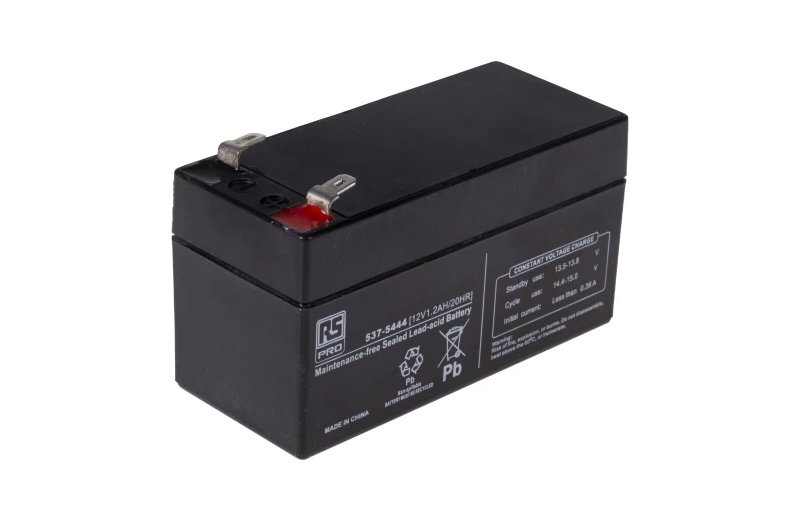
Lead-acid
Best Practices
- When charging, charge the battery to 100% before using it again.
- Be patient with charging, as charge times can take over 8 hours on some speakers.
- If your speaker doesn’t include a BMS, you should try to prevent your speaker’s power from dropping under 50% before recharging.
Benefits
Drawbacks
Popular speakers using Lead-acid batteries: Monster Rockin’ Roller 270, ION PartyRocker Plus, ION Audio Tailgater iPA77, and many other larger, more affordable speakers.
Lead-acid batteries are quite different from both forms of Lithium batteries and need to be taken care of very differently as well. Lead-acid batteries don’t boast the same types of fast charging speeds that Lithium batteries bring to the table, but what they do bring is an affordable battery type that can effectively accommodate large capacity.
You’ll find that lead-acid batteries will be more likely found in larger Bluetooth speakers, especially those that offer large drivers on relatively affordable devices. Because Lead-acid batteries are bigger and heavier, they do, unfortunately, add a lot of weight to the speaker.
The charging process of Lead-acid is perhaps where this technology lags behind the most. The charging times of Lead-acid batteries are lengthy, and one should charge the battery to a full charge. You can sometimes find charging times over 8 hours for some larger Bluetooth speakers using Lead-acid batteries.
These speakers are most commonly found in budget-focused party speakers. They are especially popular in affordable tailgate speakers. We don’t typically associate the use of Lead-acid batteries with premium products, at least not in the Bluetooth speaker market.
Lead-acid batteries operate with a much lower depth of discharge, so while Lithium batteries can be depleted to fairly low levels without much problem, the ideal point of charge on Lead-acid batteries is 50%. Consistently draining your Lead-acid battery speaker below 50% will result in noticeable performance degradation over time.
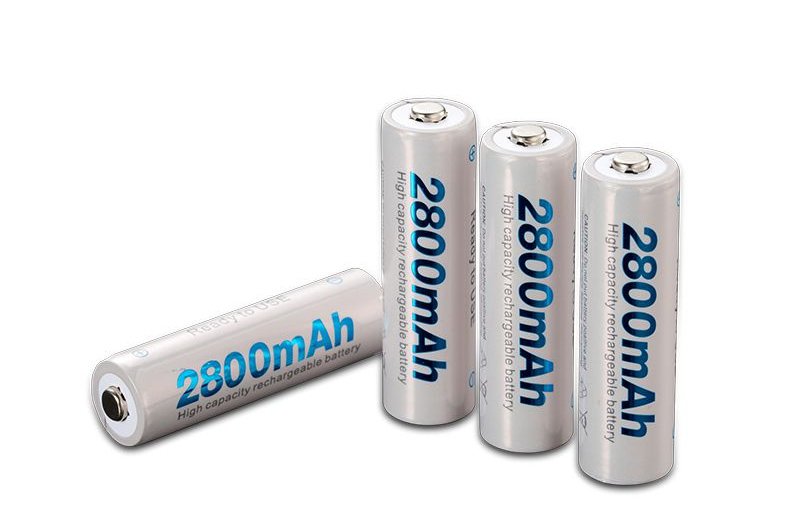
Nickle Metal Hydride (NiMH)
Best Practices
- Nickel batteries benefit from being fully depleted before being charged.
- When charging, charge these batteries up to a full 100%.
- Once fully charged, avoid leaving them on the charger for extended periods.
- Treat these batteries carefully; they can be prone to damage if accidentally dropped.
Benefits
Drawbacks
Popular speakers using Nickel Metal Hydride: Most reputable manufacturers have moved away from NiMH.
Lastly, we’ll talk about Nickle (NiMH) batteries. This battery type was extremely popular in electronics in the late 90s and early 2000s, but we’ve begun to see it being replaced by Lithium-ion. One of the reasons for the popularity of Nickle Metal Hydride batteries was the balance between affordability and safety.
NiMH has an efficiency of just over 80%, which falls quite short of that found in Lithium batteries. Changes are if your device has a NiMH battery, it’s an older product. Thankfully, there are still replacement NiMH batteries for sale for a number of the more popular, earlier models of Bluetooth speakers.
As we touched on when talking about Lithium-ion batteries, NiMH is the battery type that is responsible for all the PTSD we’ve acquired from the battery maintenance warnings on our old cellular phones.
Nickel Metal Hydride batteries have a pretty bad reputation for ‘battery memory’ and can self-discharge around 1% per day, though this typically occurs with low-power consumption over extended periods with products that sit on standby. That said, the battery’s efficiency will mostly be determined by the device’s BMS (Battery Management System). There is no BMS standard for batteries, and it all comes down to how a particular brand builds its product, but a quality BMS can reduce the problems we see with Nickel-based batteries.
If you happen to have acquired a new product that still uses NiMH batteries or recently replaced the NiMH battery on your Bluetooth speaker and are looking to ensure better maintenance, you’ll want to be as disciplined as possible when taking care of your batteries.
These are fairly fragile batteries, and if dropped, it’s not uncommon to find that the battery itself has been damaged. Avoid dropping your NiMH battery to prevent this risk.
When using your NiMH-powered speaker for the first time, charge it fully, but don’t let it sit connected to the charger for an extended period once fully charged. If your device has any standby modes where the battery may be active at low consumption levels over extended periods, make sure to use the speaker occasionally, depleting the charge and then fully recharging.
And Finally…
We hope this article can help you buy a Bluetooth speaker that best fits your maintenance abilities. For some, it’s easier to spend more money and worries less about charging times and battery discharge, while for others, money may be the deciding factor, and the required maintenance is merely an obligation around the product purchased.
It’s not always practical or easy to perform best practices in terms of battery charging and storage, but if you’re looking to get the most out of your investment, it’s something you should always be considering.
